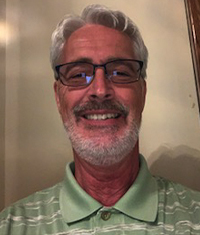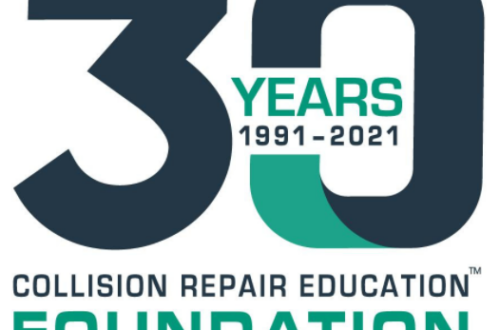Restore Crashworthiness with Corrosion Protection– Keys to a Safe and Proper Collision Repair

“Today’s vehicles are highly engineered and not forgiving of imprecise repair processes. When it comes to crashworthiness after the repair, millimeters and milliseconds matter!” according to Scott Peirce, Strategic Account Manager at 3M during ASA’s August 19th Webinar Wednesday. “The responsibility to restore crashworthiness lies with you, your business and your technicians. Many products and processes combine together to restore the initial condition of the vehicle so it’s capable of handling a subsequent collision.”
Peirce explained that corrosion protection is vital to restoring a vehicle’s crashworthiness. Corrosion can impact airbag timing, and fatalities are more likely due to rust. He stated, “If you can effectively access the area with a traditional paint spray gun, corrosion protection is best achieved by applying a direct to metal primer, followed by the vehicle’s color and clearcoat to achieve recommended dry film thicknesses, if and as required, per the specific paint company and vehicle manufacturer’s guidelines.”
“If you cannot effectively access the area with a traditional spray gun, that is when materials like weld-through primer and cavity wax may be the most appropriate solution to help restore corrosion protection,” he continued. “A vehicle’s ability to resist corrosion could be significantly compromised if the vehicle manufacturer’s corrosion protection is not restored. This could also lead to future issues with safety and/or resale value.”

Looking at a case study of a damaged bumper and examining the requirements related to 1500 MPA high strength steel frame rails, 3M Business Development Manager Mark Algie joined in to express, “OEM repair procedures need to be reviewed to determine repairability. It looks like a simple repair, but the OEM procedures tell us the left rail has to be replaced and there are a lot of other major components that could be impacted by this collision. You have to take the rail apart, and it’s going to involve a lot of parts. It becomes a very intrusive repair, but that’s what it takes to correctly restore this vehicle to its pre-accident condition.”
Moving on to welding, Peirce observed that six different weld conditions are required just for the front stiffener, and this part cannot be removed and reinstalled because of the spot welding conditions. “There are a number of manual weld settings that need to be adjusted to properly perform this repair. You can’t just move forward with replacement using automatic settings on welders. You need to stop, identify the different weld settings, and adjust to get the proper welds.”
After Peirce finished discussing weld-through primer recommendations, Algie shared information on several OEMs’ requirements related to bonding adhesive selection, but he stressed, “You always need to refer to the OEM repair procedures because they’re constantly being changed and updated.”
Bare metal seam sealers can help with corrosion protection and are designed for rapid production, but 3M recommends priming before seam sealing. “The market demands it because it’s good for production and speed,” Peirce said. “Bare metal seam sealers can be acceptable, but you have to ensure that all bare metal is covered. Any seam sealer is only effective if it is coated properly, but bare metal sealers are especially vulnerable if the coatings are too thin or do not achieve full coverage.”
“Refinish technicians must be especially thorough while refinishing and be sure to paint from both directions to ensure full coverage of the ‘shadow side’ of the bead profile,” he added. Identifying the most difficult areas to achieve full paint coverage as the door hem flanges, wheel openings, lower rockers flanges, and any flange sealed near a tight corner, Peirce cautioned, “These also happen to be the most corrosion vulnerable areas of the car, so caution should be exercised.”
Epoxy seam sealers provides better coverage then aerosol seam sealers, and it’s imperative to research OEM position statements and repair procedures in order to duplicate the original appearance and function of the seams.
Next, Algie discussed cavity wax OEM requirements, emphasizing, “Cavity wax must be applied to all interior cavities, weld flanges, hem flanges as well as any area affected by the repair, especially where any type of welding was performed.”
According to Peirce, a lack of corrosion protection inside cavities and on the back side of the welds is the most common problem found by post-repair inspection companies. He also discussed some of the quality control tools that shops should invest in, such as a borescope and a mil gauge, in order to perform their own post-repair inspections.
Algie pointed out, “Post-repair inspections are more common than many of us want to admit due to a more educated public – the educated consumer is much more aware.”
Concluding, Peirce said, “We ALL have a responsibility to restore crashworthiness, and that can only be achieved by researching and documented that you’ve followed the OEM repair instructions. You need documentation to prove that you followed the instructions, and you have to follow those recommendations; don’t choose equivalents because it’s definitely not worth a little bit of savings. Conduct your own post-repair inspection, and protect your shop.”
The webinar ended with a Q&A session. For more information on ASA and future educational webinars, visit www.asashop.org/asa-webinars/.


